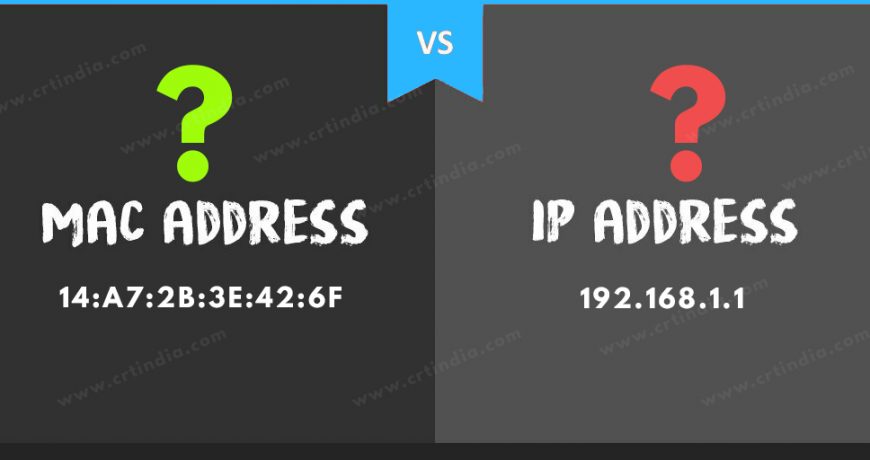Difference between MAC address and an IP address Leave a comment
MAC means MEDIA ACCESS CONTROL. A MAC address is a hardware identification number that uniquely identifies each device on a network.
It is also known as hardware addresses or physical addresses and it cannot be changed. MAC addresses are 12-digit hexadecimal numbers (48 bits in length).
The first half (24 BITS) of a MAC address contains the details of the manufacturer and second half (24 MORE BITS) represents the serial number assigned by the manufacturer.
By convention, MAC addresses are usually written in one of the following formats:
MM:MM:MM:SS:SS:SS
MMMM-MMSS-SSSS
For example, consider a MAC address “14:a7:2b:01:23:45.” The detail of the manufacturer is first three octets—”14:a7:2b”
IP address stands for Internet Protocol address. It is a logical address that helps to connect the device to the network. The Internet Service Provider (ISP) assigns the IP address to the device. It is possible to assign the IP address manually or dynamically.
The IP address can be 32 bits long (IPv4) or 128 bits long (IPv6, a new IP addressing scheme designed because, total number of addresses in IPv4 were exhausting).
| MAC ADDRESS | IP ADDRESS |
| Hardware identification number that uniquely identifies each device | A numerical label assigned to each device that uses internet protocol for communication. |
| Stands for Media Access Control. | Stands for Internet Protocol Address. |
| Also called physical hardware or Ethernet address. | Also called logical address, network or internet address. |
| Helps to uniquely identify the device. | Helps to identify the connection of a device on the internet. |
| Assigned by the device manufacturer. | Assigned by an administrator or an ISP. |
| Cannot be changed. | Can be changed. |
| 48 bits. | IPv4 – 32 bits (4 bytes).
IPv6 – 128 bits (16 bytes). |
| Works in Data Link Layer.(Layer 2) | Works in Network Layer.(Layer 3) |
TO know more about our products please check https://netlinkict.com/shop/



